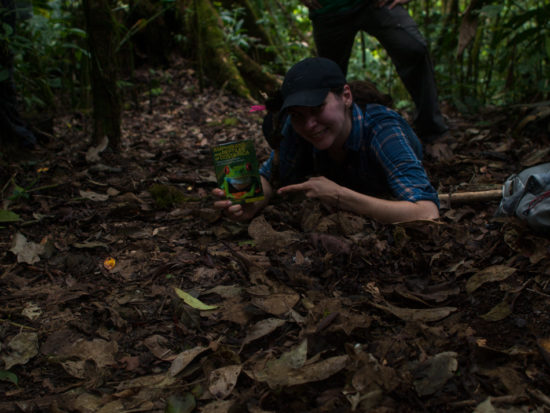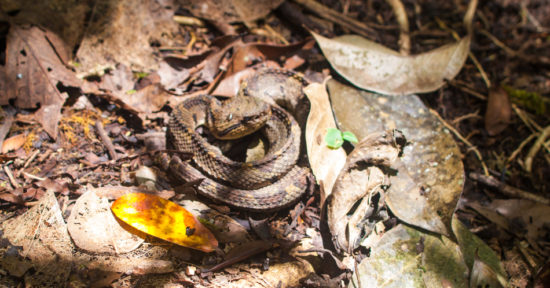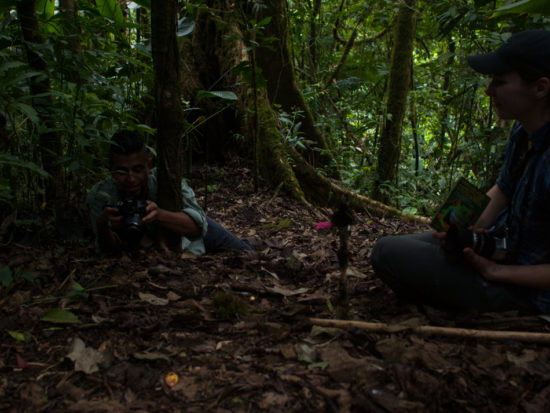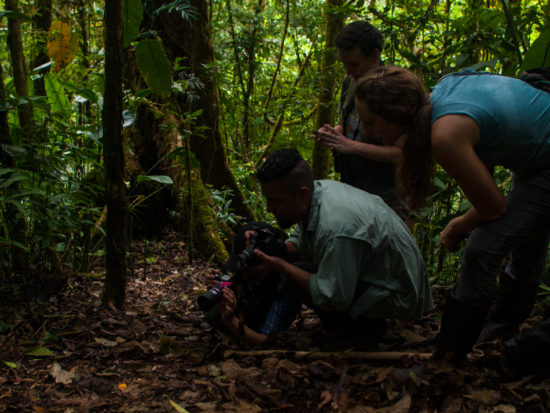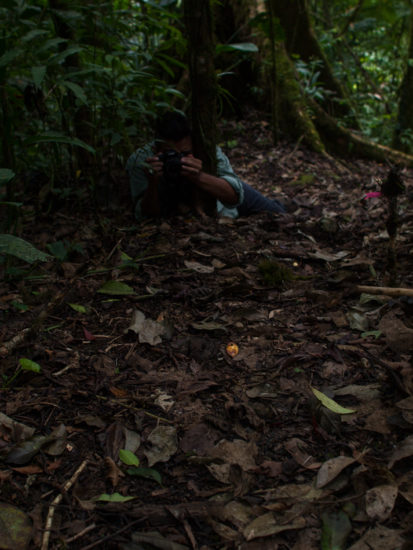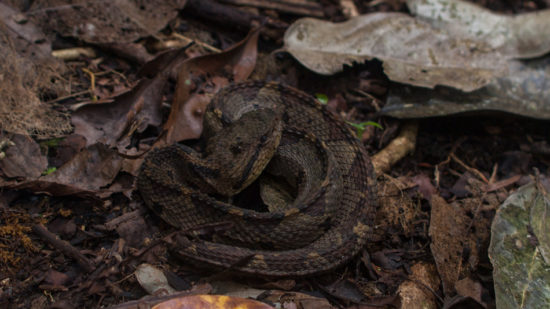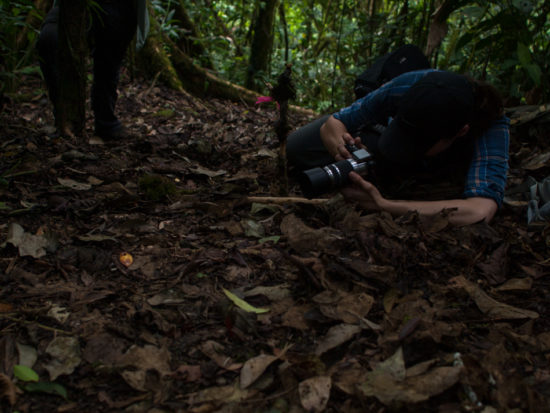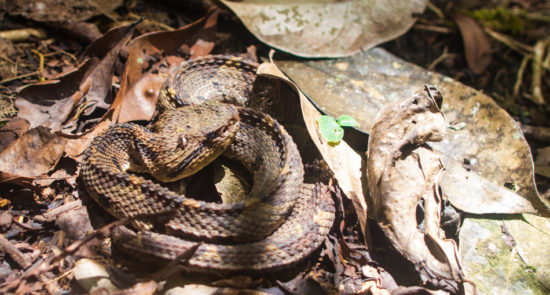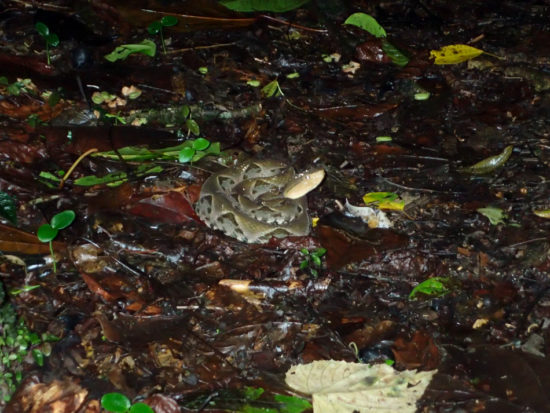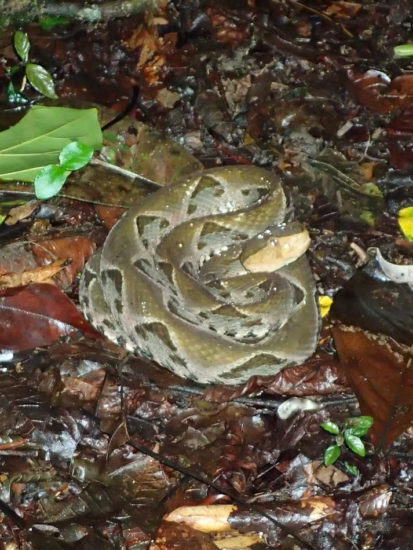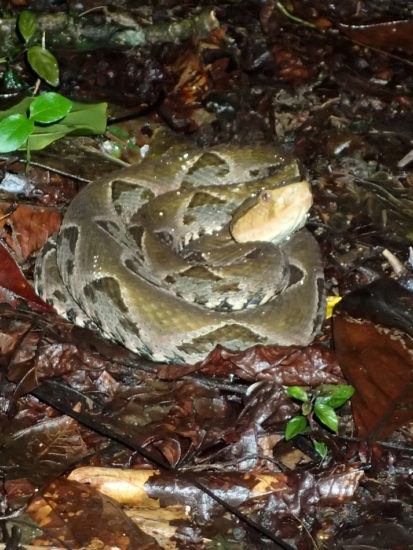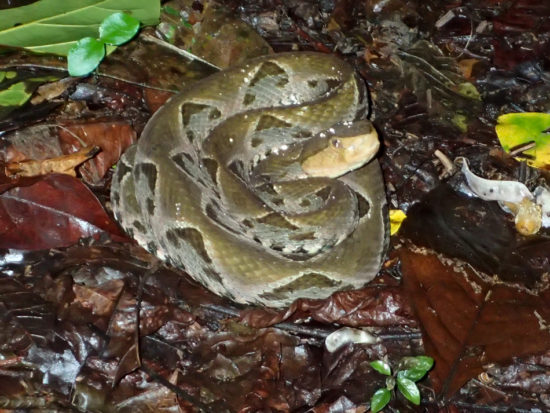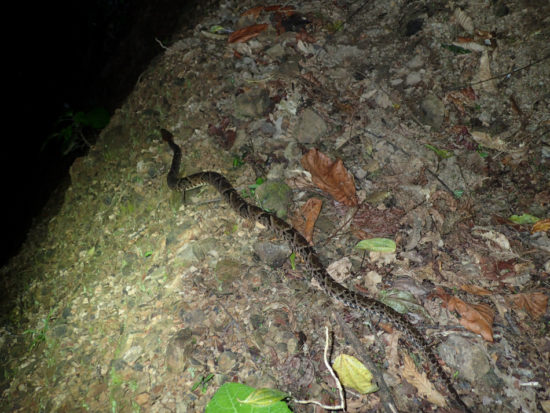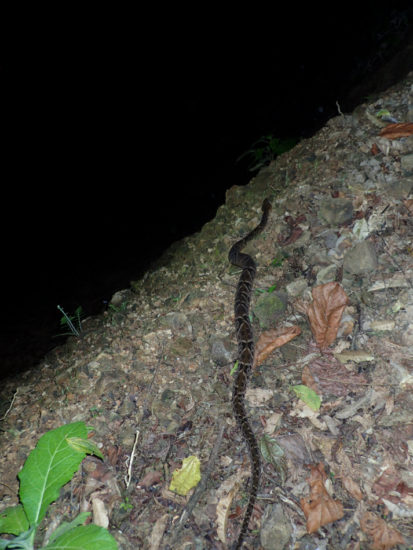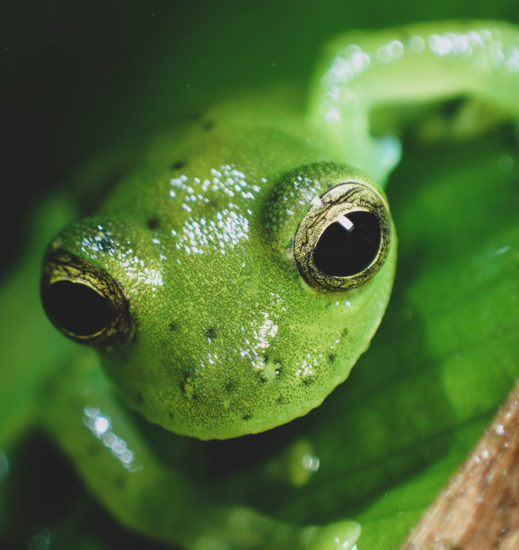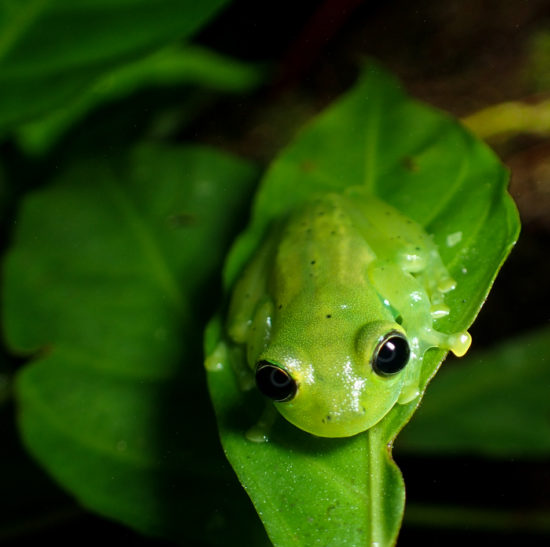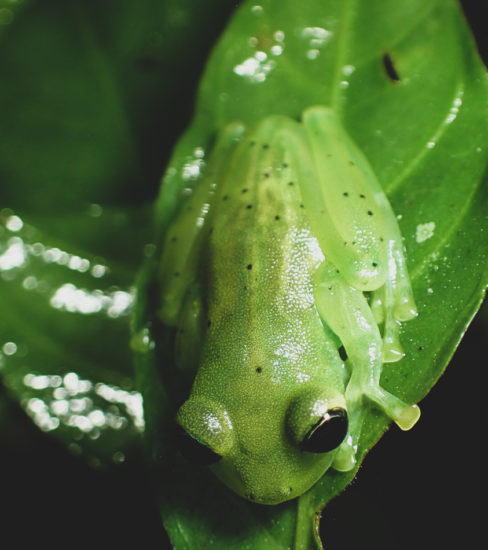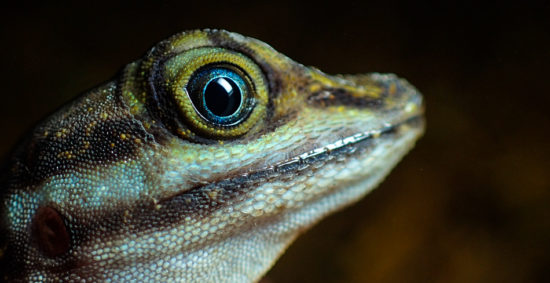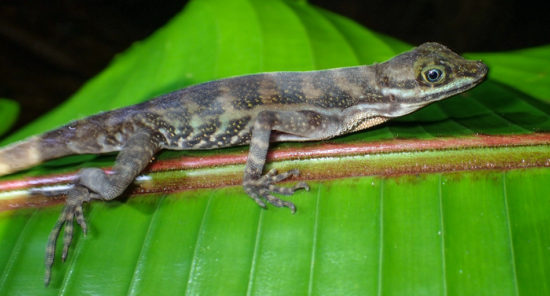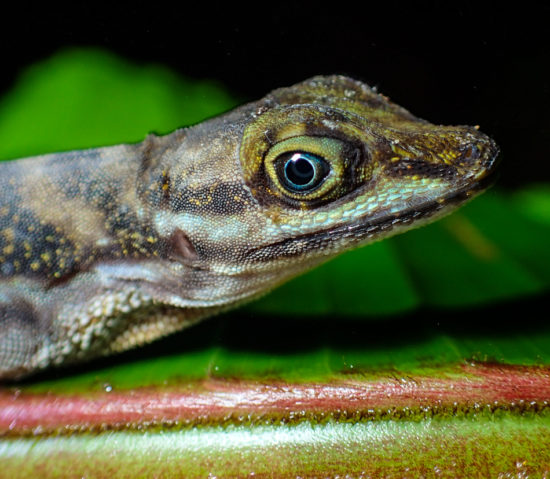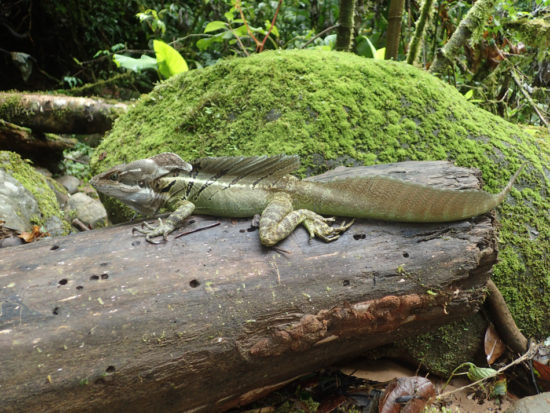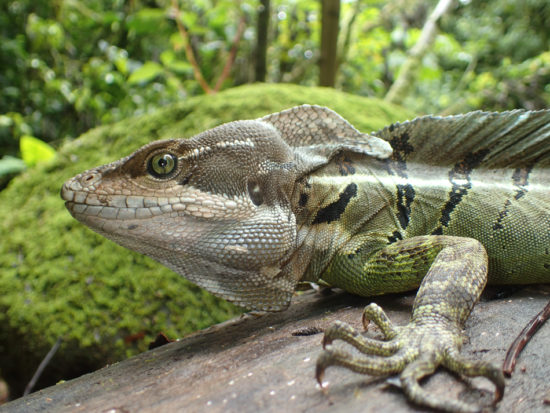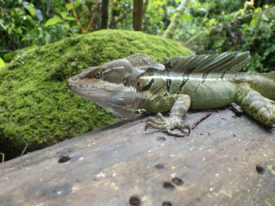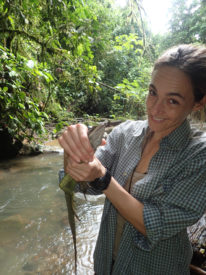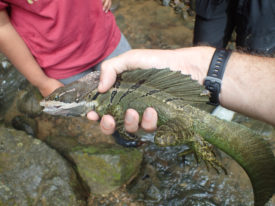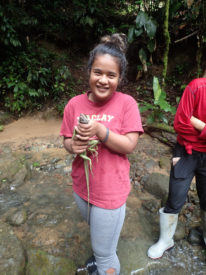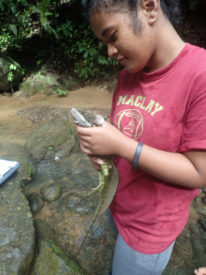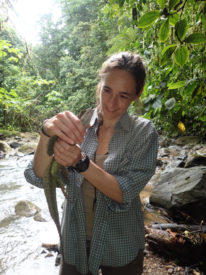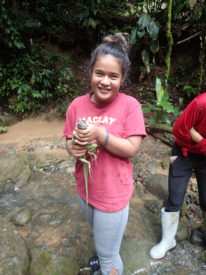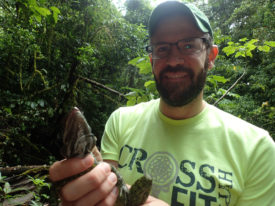Juvenile Bothrops asper on the edge of a ditch in the Wilson Garden.
Tag Archives: Herps
Brilliant forest frog
Costa Rican Salamander!
I think this might be the only salamander I’ve seen in Costa Rica—probably a plethodontid, lungless salamander in the genus Bolitoglossa. Found in a small stream pool on Cerro De La Muerte. (Yep, a few dead things today…).

First snake of the trip
My first snake sighting of this year’s LSAMP REU trip; perhaps a dryad or salmon-bellied snake (Mastiogodryas melanolomus), although quite a tentative identification. It appeared to be about to shed—much of its body appeared greyish white as the scales peel away. Edit: it looks like this is probably a bird eating snake, Pseutes poecilonotus, which varies quite heavily in their coloration and includes a morph with the greyish hue that we’ve found. I also reported it in 2015.
Darko and I encountered this specimen along the Loop Trail.
Smilisca phaeota
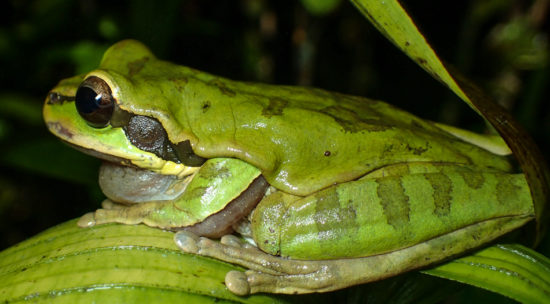
Smilisca
Jumping Pit Viper
In 2015, on the last hike of the summer, we came across a jumping pit viper (Atropoides nummifer) and brazenly (or foolishly) photographed, labeled, and finally removed it from the Gamboa trail.
Fer-de-lance
I ran into two Bothrops asper (Fer-de-lance or Terciopelo) on Las Cruces trails (one on Sendero Selva and one on the Water Trail) this year (so far), which is two more than any other year since 2013. Below are a few images of the two.
The only other B. asper I’ve seen in the area was Finca Cantaros in 2013 while batting. The first was a juvenile in a stream bed at Campanario (on the Osa Penninsula) in 2008 that we (at least Oscar Rocha and Mike Monfredi) encountered while walking upstream.
Emerald Glass Frog
Centrolenella prosoblepon
Eyes in the Stream Anoles
Anolis (Norops) aquaticus has bluish-green eyes, while the Anolis oxylophus has coppery eyes, as I’ve written about before. Here are those pretty eyes.
Common basilisk
Macy, an REU student this summer (not pictured), discovered a large male Common Basilisk (Basiliscus basiliscus – aka Jesus Christ Lizard) under a rock while surveying for spiders. They get their name from “running” on water to escape, but this individual seemed to be too cold and wedged in hiding. I pulled it from the rock and we took some photos—only Juliet, my student, and another research mentor, Patricia, braved holding it.












